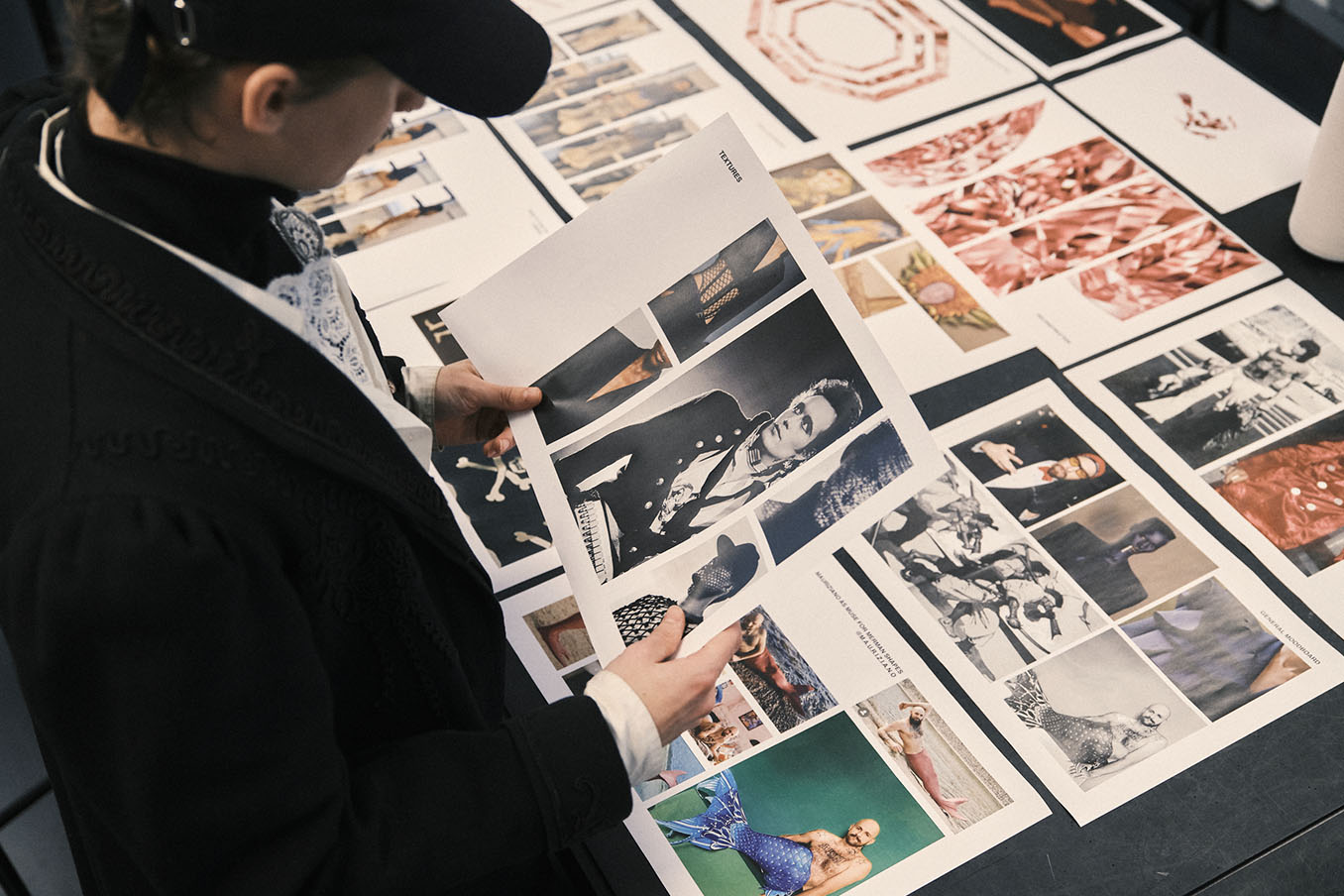There are moments when a city seems to dream itself into being, and Milan, during Design Week, becomes precisely that: a fevered, flickering dream. Not the sentimental kind, but precise and energetic. Undergraduate in Fashion Art Direction student Mobina Mirzaei reports.
Fuorisalone is all about hype. Half of your time will be spent in lines that don’t move forward. Perhaps they’re testing if you have enough passion for what you’re experiencing or not.
@polimoda #Polimoda Fashion Business student @ara’s diaries is at #MilanDesignWeek ✨ #designweek #fashionstudent ♬ original sound - Polimoda
The theme this year, Connected Worlds, seems incidental at first. These events remind you of how design is not merely furniture, nor fashion merely clothing. They are both, in the end, about how we want to be seen when we are alone in a room. How we dress ourselves and how we dress the room.
The hierarchy in fashion has always been palpable, and this year it was notable throughout design week as well, with big brands and big studios taking over the majority of the exhibition making.
The presence of one studio was notable in the city; in collaboration with Loro Piana, Dimorestudio presented La Prima Notte di Quiete at the Cortile della Seta, Loro Piana’s Milanese headquarters. This immersive installation drew inspiration from the 1972 Italian film of the same name, enveloping visitors in a dreamlike domestic setting that evoked the melancholic beauty of 1970s cinema. The space featured a palette of warm tones, luxurious textures, and subdued lighting, creating an atmosphere of introspective elegance. The installation not only showcased new furniture and decor pieces but also served as a narrative environment where fiction and reality coalesced.
At Fondazione Sozzani on the other hand, Dimorestudio introduced Work It, an exhibition that explored the intersection of labor and design. The installation featured a series of vignettes that reimagined workspaces through a lens of artistic expression, challenging traditional notions of productivity and aesthetics. Through bold color schemes, eclectic furnishings, and curated objects, Work It invited visitors to reconsider the environments in which we create and labor.
At BASE Milano, the We Will Design 2025 program embraced the theme Making Kin, exploring the dissolution of boundaries between humans, animals, and objects. The exhibition featured a diverse array of projects, from Giovanni Amerio’s Sharp Partitions and Parasitic Bricks, examining resistance in urban creation, to Giuliano Wai Ging Sammarro’s porcelain works capturing nature’s beauty. Other notable installations included Jade Fritsch’s Treatment for a Re-connection, a ritualistic seating experience promoting self-care and Earth connection, and Janneke de Lange’s Life on Phone, reflecting on the impact of our digital lives.
In the industrial setting of Padiglione Visconti, Saint Laurent, under the creative direction of Anthony Vaccarello, paid homage to modernist designer Charlotte Perriand with an exhibition curated by Vaccarello. Curation being about more than just selecting pieces and putting them together, the exhibition featured four of Perriand’s previously unrealized furniture designs from 1943 to 1967, including the Canapé de la Résidence de l’Ambassadeur du Japon and the Table Mille-Feuilles, brought to life in collaboration with Fondation Cassina. Vaccarello infused the space with Saint Laurent’s aesthetic through glossy black surfaces, metallic details, and strategic lighting, creating a dialogue between Perriand’s modernist vision and contemporary fashion sensibilities.
There was another homage to Charlotte Perriand at Louis Vuitton, suggesting her work, often overlooked in the shadow of her mentor Le Corbusier, is now being recognized for its originality and vision. Is this an inkling of a bright future for the presence of women in the creative industries?
Aesop – The Second Skin’s sophisticated and elegant exhibition was breathtaking to each viewer that walked in. From trying the new products upon entering to the in-built structure that gave an intimate feeling to escape the chaos of the outside world. The intersection between sculpture and the aroma-based experience was its ground merit.
The Fashion Art Director arrives not seeking answers, but shape, scent, design, and some fragile frame around which to build the next campaign, the next vision, the next illusion of control over color, over line, over desire. Milan offers no easy inspiration. Instead it presents challenges and contradictions. Asking how is relevance measured in seconds?
It dares you to make the intangible nature of desire, tension, and story visible again. In the end, it’s not about clothes. It’s about making people want something they didn’t know they were missing. That’s what Milan does. And why you end up waiting so long in line.
Credits
Written by:

